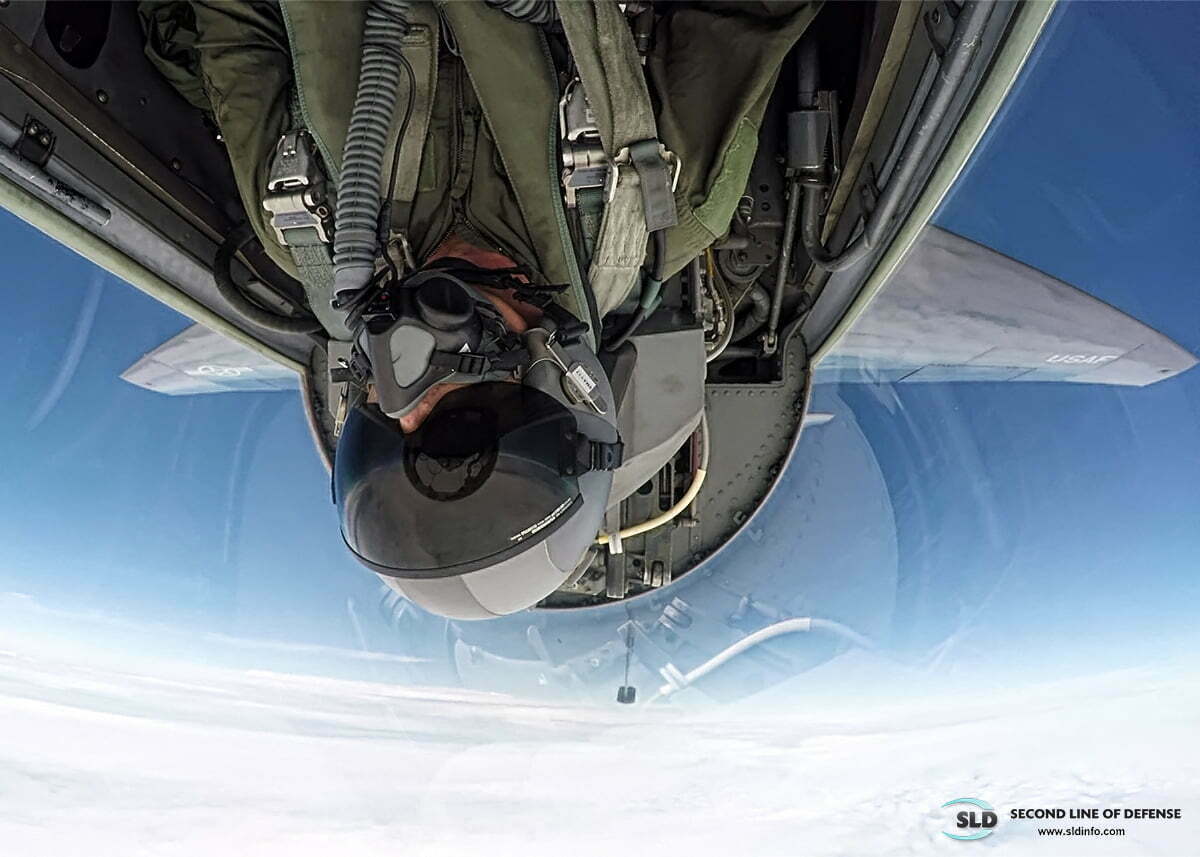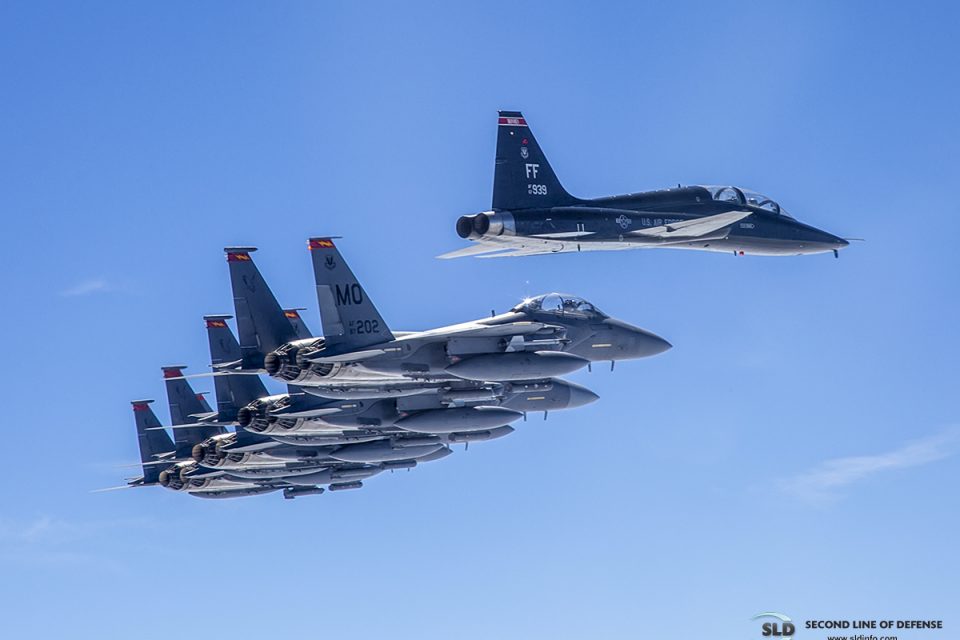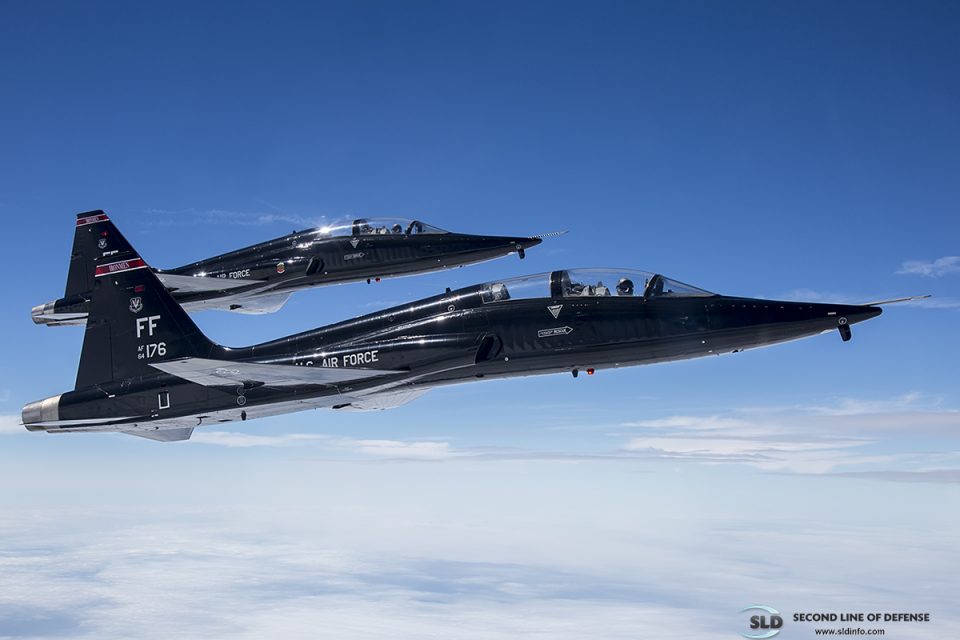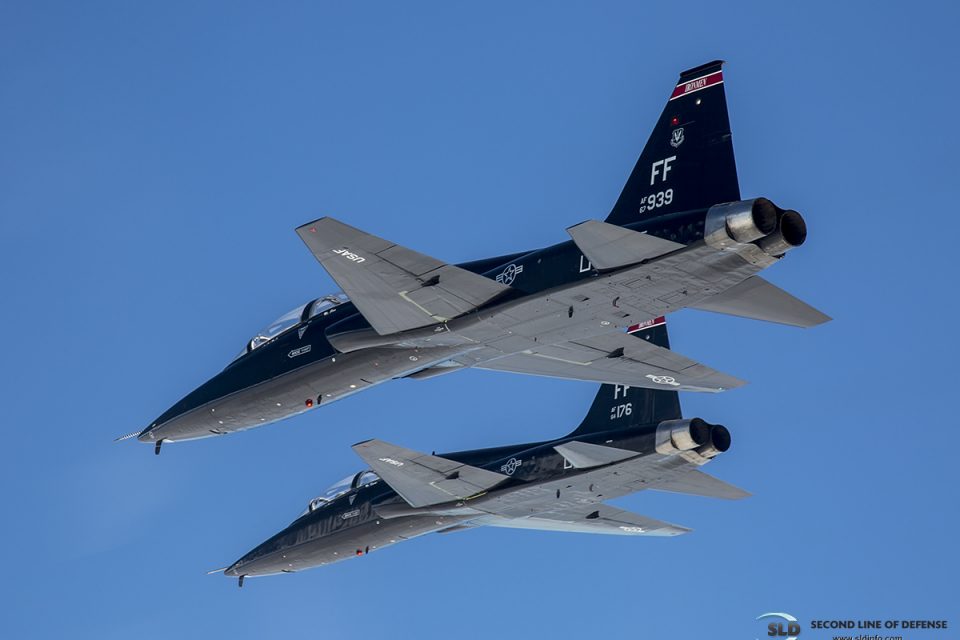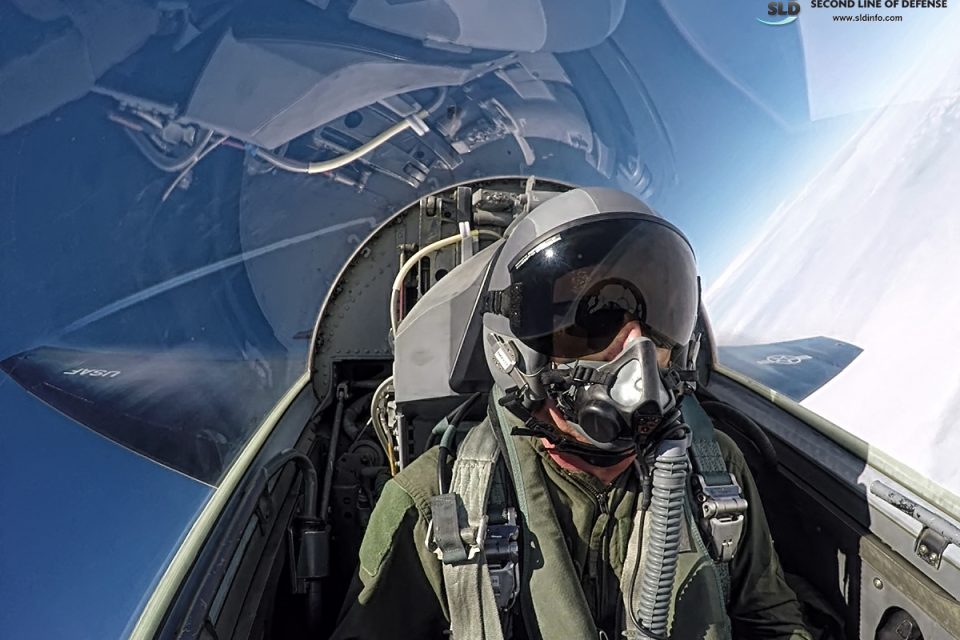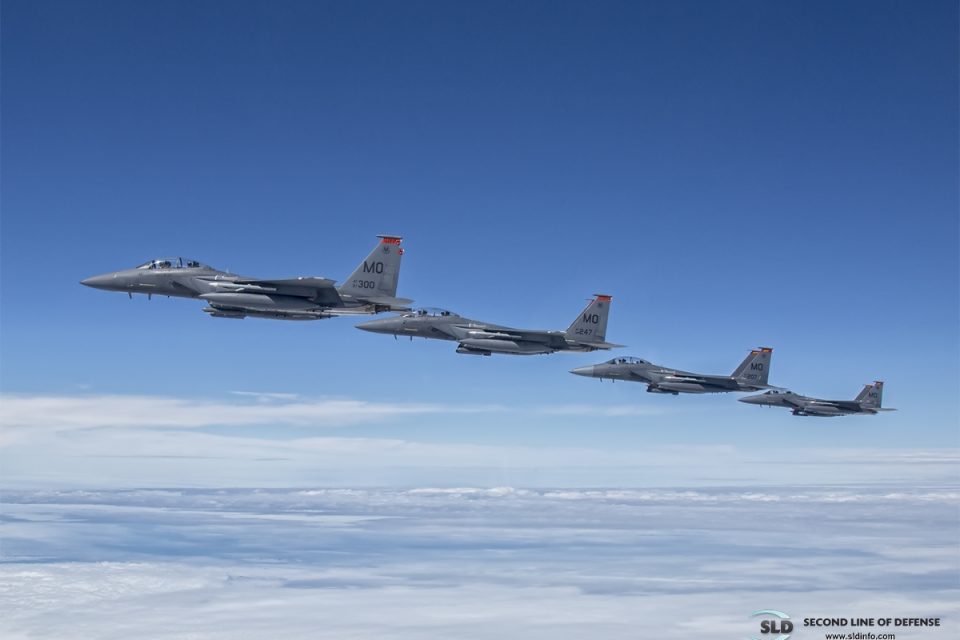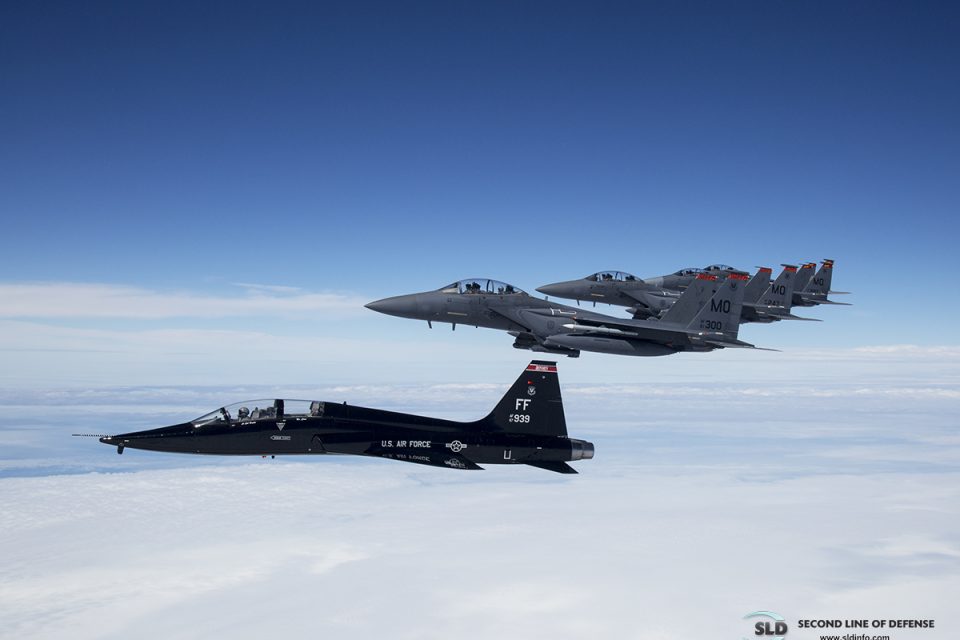2017-05-05 By Todd Miller
I had a chance to fly with Red Air during Atlantic Trident 2017.
The key Red Air platform was the F-15, and the strike eagle has a long and distinguished combat history.
As Kyle Mizokami has noted about the Strike Eagle:
For nearly three decades, the F-15 Eagle fighter was considered the undisputed king of the skies. Until the debut of its replacement, the F-22 Raptor, the F-15 was the U.S. Air Force’s frontline air superiority fighter. Even today, a modernized Eagle is still considered a formidable opponent….
The first F-15 prototypes flew in 1972, and serial production began in 1973. The plane rapidly began to populate both the U.S. Air Force and friendly air forces, including Israel, Japan and Saudi Arabia. The F-15’s first air-to-air kill was on June 27, when Israeli Air Force ace Moshe Melnik shot down a Syrian Air Force MiG-21 in his F-15A. Melnik would eventually down four aircraft from F-15As and F-15Cs, for a career total of eleven enemy fighters shot down.
Melnik’s kill was the start of a remarkable string of 104 consecutive air-to-air victories for the F-15, with not a single Eagle lost…..
Today, the USAF still employs around 177 upgraded F-15C and two-seater D models, and approximately 224 F-15E Strike Eagles. F-15s are deployed in forward bases in both Europe and Asia, most notably at RAF Lakenheath in the UK and Kadena Air Force base on the Japanese island of Okinawa. Japanese F-15Js also operate from Okinawa, and were allegedly involved in an aerial encounter in June 2016 involving Chinese Su-30 Flanker fighters. F-15Es are currently deployed at Incirlik Air Base, Turkey, where they are participating in the air war against Islamic State.
In a world still dominated by fourth-generation fighters, the F-15 is an aging—but still formidable—fighter.
Red Air plays a critical part in ensuring total force integration of our finest combat platforms at Atlantic Trident ’17
Facing off against an historic gathering of the most formidable fighter aircraft in the world. the F-15s and T-38s faced a formidable task.
I was able to catching a seat in one of the “Langley Adversaries” on an actual Red Air vs Blue Air vul (vulnerability period, which references the time when an aircraft is subject to harm).
The United States Air Force (USAF) 1st Fighter Wing located at Joint Base Langley-Eustis (JBLE) hosted the event.
1st FW is responsible for 30% of the USAF Raptor fleet.
Described as “America’s premier Air Dominance wing,” the 1st FW is elite company.
This group (with the help of the 71st FTS) ensures the Raptors under their command are maintained, manned by skilled pilots, and ready to go when and where needed worldwide, at a moment’s notice.
After two days of rain and scrubbed vuls the clouds began to lift.
It didn’t matter, even with clear skies a nasty storm was brewing over the Atlantic, Typhoons, Lightning strikes, with the “gusts of wind / bursts of fire” (Rafale), and the “Bird of Prey” (Raptor) circling over it all.
Not exactly a Hollywood script, but this is the real world.
And what awaits the Strike Eagles and Talons of Red Air posing as a variety of MIG threats with specific missile emulations.
The Platforms & Players;
Blue Air: 1st FW F-22A Raptors; Eglin AFB F-35A Lightning IIs; Royal Air Force (RAF) Eurofighter Typhoons; French Air Force/Armée de l’air Dassualt Rafales.
Red Air: 71st FTS “Ironmen” T-38A Talons; 391st FS “Bold Tigers” F-15E Strike Eagles from Mountain Home AFB, ID.
Given operational security, some of the following flight details are principally correct.
The six participating Talons flew in two flights of three, “Vodka” and “MIG”.
The Strike Eagle flights “Marlin” and “Dagger” combined to form another 6 aircraft.
12 Red Air with E-3A Sentry support, against 16 Blue Air.
Given Blue Air was farthest from JBLE and launched first, they enjoyed tanker support from the Armée de l’air KC-135, as well as US tanker units (including at one point a KC-10 from the 305th AMW Joint Base McGuire-Dix-Lakehurst).
What could we expect of the vul?
Red Air understood that Blue Air was tasked with a strike mission (target location unknown to Red Air) using the Rafale and Raptor as strikers.
While some might think the F-35As should have been the strikers, Raptor was the word and Raptors do have a very effective strike capability.
The rest of Blue Air, Typhoons and Lightning IIs (and perhaps a mix of Raptors) were flying escort protecting the strikers.
The Challenge
Blue Air was challenged to employ “total force integration” across nationalities and platforms to form a multilayered, overlapping sphere of impenetrable “armor.”
Certainly, Blue Air would utilize their superior sensors to create a 3D picture of the battle space and their state of the art weapons to “destroy” Red Air well beyond visual range (BVR).
Red Air would utilize dissimilar threats against Blue Air coming from a multitude of directions and altitudes.
The Talons and Strike Eagles primary goal; to find the Blue Air strikers (call sign “Rogue”), fight through the escorts to get within an effective (emulated) missile envelope and realize a kill.
However, even if a visual on a Raptor or Lightning II was realized (and Red Air had the radar capability) they would still be “chasing a mirage” and could not expect to get a lock.
Total force integration of the Gen 5 and 4.5 platforms creates a nasty dilemma for a real adversary.
At the best of times target fixation is deadly, add 5th Gen assets in the mix – fatal.
While the scenario sounds like a futile effort for Red Air, it is key to understand that this exercise is not a game where the highest kills wins.
Rather, the primary purpose of the exercise is to ensure Blue Air (our collective nations fighting edge) refine Tactics, Techniques and Procedures (TTPs).
With common, familiar TTPs, the coalition will quickly come together in the face of a future conflict and be effective, day one.
The coalition of Blue Air was challenged to maximize their mix to most efficiently use each aircraft’s exceptional capabilities, weapons loads and available fuel.
The best efforts of Red Air would test the tactics of Blue Air, to ensure they overlook nothing, and responded correctly to the dynamic of the fight.
If a Blue Air participant required a learning lesson – it was up to Red Air to provide it, and this is the right time and place to do so.
In the “fog of war” an area of the formation might well be left uncovered, and Red Air would get a leaker through to do some damage.
The 71st FTS fields young pilots preparing for the Raptor as well as seasoned Raptor pilots and pilots with plenty of experience in alternate platforms.
One look at the markings on the F-15E Strike Eagles of the “Bold Tigers” and it was clear there is plenty of combat experience in those cockpits.
No question, this group of pilots had the ability to take down a Blue Air player.
In a previous visit to the 71st FTS I met one of the T-38 pilots who had done that very thing.
I expect it was a lesson that resonated with the Raptor pilot.
The Experience
Waiting in open cockpit at the end of runway (EOR) Blue Air completes their launches, and our teammates in F-15Es thunder down the runway in glorious afterburner.
Following MIG flight, Vodka flight of Talons launches last, one at a time in rapid succession.
We form up at 2000 ft before punching through the clouds in formation.
I’m back seat of Vodka #3 flown by “Code,” (1st Lt.) in tight our flight lead #1 “Shim” (Maj.) and #2 “HOTAS” (Maj).
Within seconds we break through the clouds and the Talons look like beautiful black darts in the blue sky.
The SR-71 Blackbird clearly established that “black jets” are the coolest, so we are in good company.
The aircraft are stable and the pilots smooth.
We stay in formation as we climb to altitude on the way to the fight.
MIG flight is now far to the southeast working the opposite flank. Marlin and Dagger are well above us in their own airspace blocks working the higher altitudes.
Red Air is tightening the noose.
At altitude and nearing our block, Vodka 1 indicates he will run in on Blue Air from 10,000 ft below us.
The Talon drops away so fast my perspective is forever altered.
A high-performance aircraft allows the pilot to carve the sky at will shrinking time and space in ways grounded mortals cannot know.
With “go time” quickly closing in, Vodka 2 moves some distance from us.
Flying almost parallel we form a wall approaching Blue Air. Red Air is attacking in numbers from many different directions and altitudes.
Perhaps Blue Air will miss one of us as we close rapidly and a striker will fall!
We now appear to be alone in the sky, a single gunslinger in the expanse with weapons armed and ready against impossible odds.
Focus and activity keep the thought at bay, the controllers voice a clear reminder that we are part of a much greater force and we do not fight alone.
“Fights On!” and we fly our vector like an adversary, oblivious to the invisible danger that lurks unseen in the distant (or near) sky.
The next 45 minutes is something of a blur.
The controller calls a heading, we turn – someone turns, there is a lot going on in the skies.
The tempo increases, the radio crackling with voices.
Controllers in the E-3A are busy directing and working what sounds like play by play of an intense play-off game.
An intense play-off among warfighters is happening in a rapid time-space environment.
Through the intercom Code warns “G’s!” I have split second to prepare for a snap turn and the onset of G’s.
Code is kind, the G’s are short lived and light – well under 3.
Within moments I hear the radio crackle, “Vodka 1 you’re dead,” followed by “Vodka 2 you’re dead.”
Our flight is being picked off like tin cans on fenceposts.
I wait to hear Vodka 3 you’re dead – but silence.
I’m thinking, c’mom Code, this is our chance let’s press, I could use a kill on my resume.
Marlin 1, Dagger 2 No, No – not the Strike Eagles!
The comms crackle in warfighter shorthand, best deciphered by those who speak in this language.
With a sense of the inevitable, I hear it “Vodka 3 you’re dead.”
No sympathy, just cold, matter of fact.
It is done. I don’t know what killed us, but we were shadow boxing with a lethal foe.
The USAF and Its Coalition Partners Do Not Want a Fair Fight
As we turn to regenerate it is clear this is not a fair fight.
But that is the point, and why the tremendous investment in the 5th Gen aircraft.
The USAF has no intention to fight fair, they have built their force to dominate the air.
Who owns the air will find it much easier to own the ground and sea.
Looking straight up far above us I see a silver spec blazing across the sky contrail in tow at what appears to be supersonic speeds.
A Raptor?
It flies with impunity, we are mere spectators.
If this was a real fight, seeing such a sight would be a great signal to RTB (return to base).
Quickly.
After regen we return to the fight flying a designated vector.
Code rolls the Talon inverted, and pulls briefly into a vertical descent and then a great diving arc.
I had about as much as 1/10th a second to prepare for that, and 1/5 a second to enjoy it.
Thank-you very much.
Flying with Red Air at Atlantic Trident 2017 from SldInfo.com on Vimeo.
At some point, we pull near 4G, and the prospects have my undivided attention; will I weigh 1000 lbs today, or just 750?
I am told the pilots generally do not notice the physical, it is muscle memory that kicks in while their mind is focused on the battle.
I am glad to hear that, I’d certainly hate to lose my train of thought in such a time and place.
The Talon bottoms out 10,000 ft below where the maneuver started, and we climb all the way back to 20,000 ft.
It takes a minute to perform the massive maneuver.
And then I believe I hear music – “Rogue 1” you’re dead.
Did we get a Blue Air Striker?
Perhaps for all the Red Air jets that fell – perhaps we got one…
45 minutes’ pass in the vul, and we break for RTB.
Code directs me to the right, where descending from much higher airspace, four F-15Es of the 391st FS.
In tight formation, the Strike Eagles of Marlin and Dagger flights bob up and down like joined parts of a living being.
Magic.
Magic always ends leaving you wanting more, that’s how you know it is magic.
Some may ask, “What is it like to fly adversary against the most lethal integrated fighter force on the planet?”
My answer, “You just die. Sight unseen. You just die.”
Bury your pride, and get used to dying.
But do not forget, your “death” serves a greater purpose.
The seemingly futile fight and subsequent “deaths” are critical to ensure the readiness of the cutting edge of our warfighters, and “Total Air Dominance.”
Editor’s Note: See Previous Report on Atlantic Trident ’17 including compelling comments by 1st FW Commander Peter “Coach” Fesler Reshaping Fighter Operations in the Fighter Space.
The Second Line of Defense expresses gratitude to Jeffrey Hood 633 ABW PA and the entire 633 ABW Public Affairs Team who were instrumental and exceptional with their support; Col. Pete “Coach” Fesler, 1 Fighter Wing Commanding Officer, and the 71st FTS, pilots, support, medical and others were beyond exceptional hosts. The entire team at Joint Base Langley-Eustis, professional and gracious throughout the visit. You set the bar, we can but hope to capture and share a small reflection.


